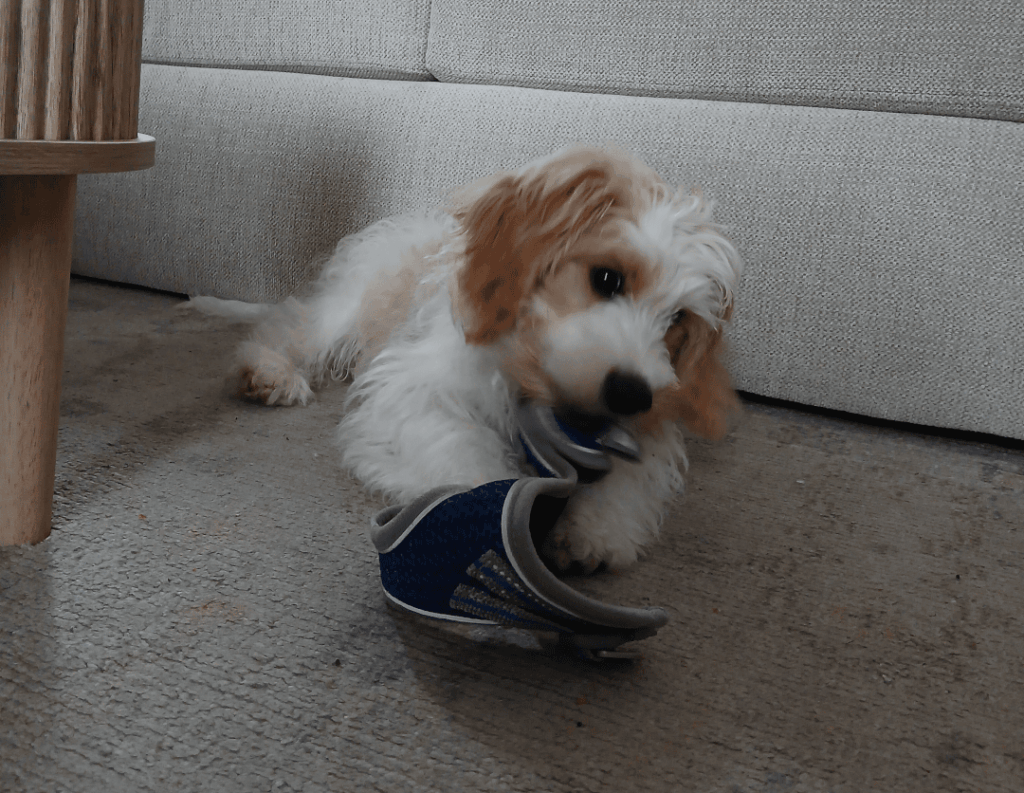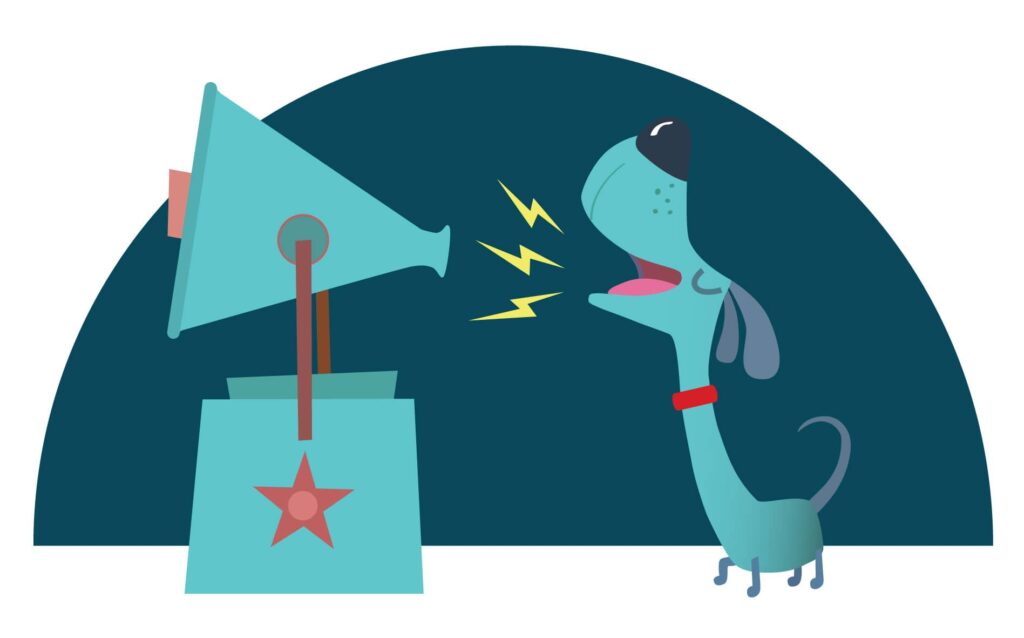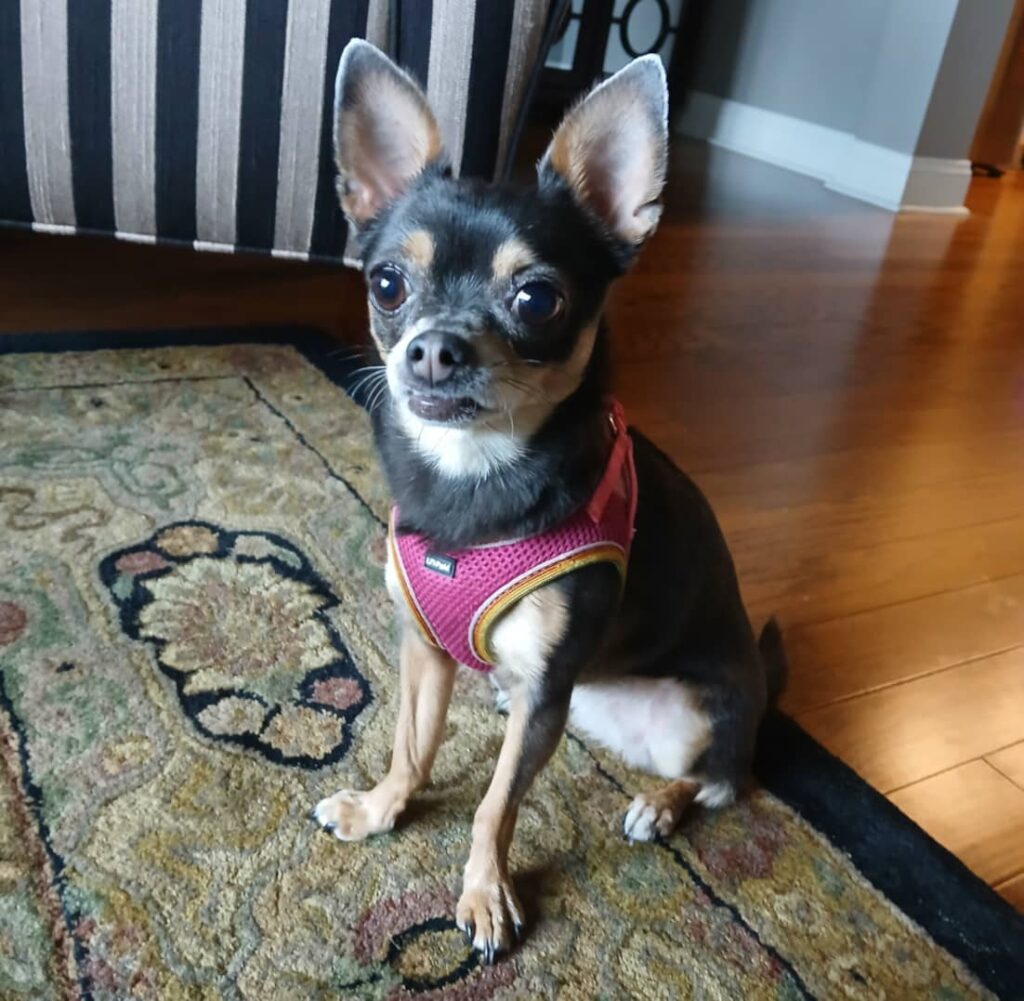How to keep old toys ‘new’ and protect your cellphone.
Your dog is running around the living room squeaking one of his favorite toys when you present him with a new one delivered to your door. It’s no contest. The new toy is now his favorite.
Researchers the world over have taken an in-depth look at the fun side of a dog’s life and discovered that canines consistently exhibit a preference for novelty. In the studies, groups of adult dogs were presented with various types of toys over dozens of tests and the published results reached similar conclusions: Dogs do prefer the unfamiliar but, on average, lost interest in a new toy within minutes. Stanley Coren, professor emeritus of psychology wrote, “It appears that once a dog is completely familiar with the sight, sound, feel, and smell of a toy it becomes rather boring.” Certainly bad news for your wallet.
Which brings us to the photo of young Finland chewing on his harness. Still warm from his little body, puppy ignored the mix of toys scattered on the floor, grabbing the harness instead. While his choice proved the canine preference for novelty, more interesting was where Finland focused his chewing. Not on the soft chewy part, but the hard plastic buckle and metal D-ring. Definitely not chewy. Finland was attracted to the high concentration of human scent on and around the buckle.
Referring to Professor Coren’s statement, we may not be able to change how a toy looks, sounds, or feels, but we can make a toy smell, but we can make a toy smell attractive to a dog. Sometimes it’s as simple as tagging a brand new toy with your scent while handing it to the dog.
The trick is keeping your scent fresh. Dogs come equipped with serious aroma analysis equipment that effortlessly detects recency, meaning your pet can tell how long it’s been since you handled their toy.
Making old toys new again
- Enhance the smell of toys. Before presenting new toys to your dog, sleep with the toys. Or hang them in your clothes closet. Or place them in your bag/pocket/backpack to absorb your scent. The deeper the smell of you, the more appealing the object will be to your dog.
- Keep toys in rotation. Leave out one or two, storing the rest out of sight and out of reach. Swap out toys every day or couple of days refreshing your scent in the process.
- Be part of the fun. Boring toys suddenly become interesting when you become part of the equation. From Professor Coren: “Playing with your dog using that old toy can change the plaything’s worth and the dog’s interest in it.” When you become part of the game, the toy becomes fun in a brand new way.
You may be wondering …
How does this explain the dog’s lasting interest in your stuff? The typical pet household is littered with toys, yet every year electronic devices damaged or destroyed by pets run into the $billions with accidental losses at the bottom of an incident list that begins with chewing. But plastic components are not tasty. And there is no nutritional value in the long list of shoes, clothing, personal items, and household goods that fall prey to pets seeking stimulation or comfort.
Dog motivations are varied: boredom, anxiety, jealousy (dog destroys game console to free up owner’s time), or smells like food (TV remotes and cellphones can be pretty tasty by the end of Sports Sunday). The common denominator is your scent.
Your dog will always be interested in the objects that interest you.
After snapping the photo, I tossed a couple training treats a few feet away from Finland’s position. He abandoned the harness to get the treats and I retrieved the harness. When he turned back toward me still holding his harness, I tossed treats in the opposite direction as a redirection/thank you and placed the harness out of reach. Everybody wins.



